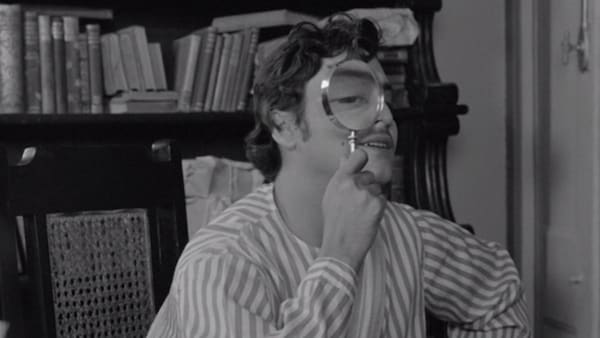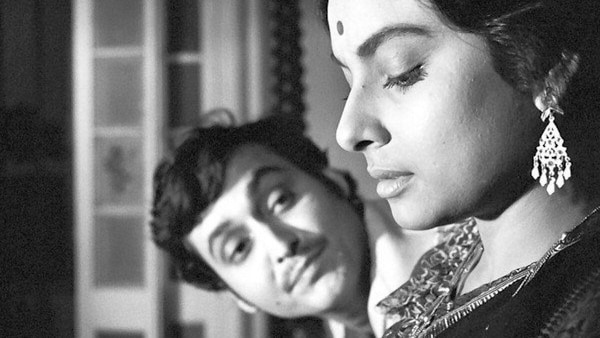Soumitra Chatterjee: An icon who put Bengali cinema on the world map
On Soumitra Chatterjee’s birth anniversary, here’s a look into his prolific career.

Last Updated: 08.55 PM, Jan 19, 2022
“It’s about a boy. A boy from a village. He is poor, but sensitive…He wants to study. He has ambitions. Through his struggles and his education, he lets go of his superstitions, the conservatism he picked up in his village. He wants to navigate the world through his intellect, but also through his emotions and imagination. Small things move him, make him happy. Maybe there are seeds of greatness in him…He is not an escapist. He knows that the point of life is to live. And he wants to live.”
~ Apu, from Apur Sansar (The World of Apu)
The world of Bengali veteran actor Soumitra Chatterjee also began with such an unassuming yet ambitious story. A young strapping lad, Chatterjee’s lean frame and a glint in the eye caught filmmaker Satyajit Ray’s attention and the former ad-man decided to zero in on Chatterjee for his last film in the famed trilogy of Apu, based on the latter half of the Bengali novel, Aparajito, by Bibhutibhushan Bandopadhyay.
In mirroring Apu’s ambitious journey to the city from the humble beginnings of village life, Chatterjee charted familiar territories. Belonging to an erudite family in Krishnagar, locally referred to as ‘Keshongar’, Chatterjee grew up in a household bustling with culture, art, music and politics. Though they were never economically affluent, his family had a rich legacy of love for literature.
As a young man, Chatterjee moved to Kolkata to pursue his Bachelors and Masters in Bengali Literature, hoping that city life would expose him to a repertoire of contemporary authors, poets and revolutionaries. It is probably at this juncture that he got acquainted with Ray.
Not only the works of Bibhutibhushan Bandopadhyay, but Chatterjee and Ray also bonded most over their mutual love for Rabindranath Tagore. Another literary icon of his generation, Tagore’s work found space in both Ray and Chatterjee’s worlds with stellar productions like Charulata and Ghare Baire.

In Charulata, Chatterjee played the ambitious and free-spirited Amal, whose introduction in Charulata’s (played by the inimitable Madhabi Mukherjee) life upended her mental peace after she starts developing feelings for her brother-in-law. While Amal was mindful of his own aspirations, his passion and love for literature provided the much-needed breather for Charulata, forming the base for the unlikely friendship.
But Amal’s life and decisions change overnight once he realises he has opportune moments ahead of him. Charulata’s sense of betrayal and subsequent exposé, is never at the cost of Amal’s life. He moves on and healthily so, but Charulata pays a heavy price. Based on Tagore’s novel Nastanirh (The Broken Nest), Charulata was a revelation for both Chatterjee and Ray.
With Ray, Chatterjee established himself as the thinking actor, one who’d woo women with his intellect and charm. The fact that Chatterjee now donned the much-popular Feluda's garb, proved to be a lucrative move for the already-famous artist.
Courtesy the filmmaking of Ray, Chatterjee slipped into the shoes of Detective Prodosh Mitter, a private investigator whose adventures in and around India attracted thousands of children across Bengal (and the rest of India). That Ray chose to mount Chatterjee atop the heavy horse, proved his conviction in the actor in him.
Understandably then, the actor (often pulled up for not being emotive enough) was shouldering considerable pressure. But his rendition of Feluda stands arguably the most popular one followed by a close second of Sabyasachi Chakraborty.
The character’s immense popularity even threatened to shroud the actor’s remaining prolific career, a move that was often regretted by Chatterjee earlier. But age and patience compelled him to accept that it was indeed his most-cherished of roles.
Referring to the nostalgic pull of the detective, Chatterjee once said, “If one young child remembers me as Feluda that makes me happy as an actor.”
But Ray wasn’t the only star that lent its cinematic light on the actor. He collaborated with a plethora of Bengali filmmakers (some even commercial maestros at the box office) like Tapan Sinha, Ajoy Kar, Dinen Gupta, and Tarun Majumdar.
Each role he was part of, contributed to the range he was able to provide as a performer. While Uttam Kumar, his contemporary, was the sure-shot matinee idol, an easy name for money-spinners, Chatterjee’s image was more subtle, more cerebral.
The actor’s later years saw a rejuvenation of the artiste’s spirit, when he signed up for films like Bhalo Theko (2003), Patalghar (2003), Ahalya (2015), Bela Seshe (2015), and Praktan (2016).
Chatterjee reinvented his aesthetics, but still stuck to his guns about promoting progressive storytelling, that indulged in good narratives that push the otherwise stunted image of Bengal. Much like his successors have admitted on multiple occasions, he was the true representative of an entire culture, having weathered the death and birth of Bengal through the tumultuous days of the Naxalite movement.
Chatterjee’s contribution to the Bengali cinematic canvas still remains unparalleled. His body of work, both across politics, theatre and films, uphold his status as an icon.

 Premium
Premium